Toys - Playmobil: Focus on the Asterix line
By Mulder, 30 june 2022

The challenge was to adapt the classic Playmobil figure to the proportions of the Gaulish heroes. The technical challenge was to immediately recognize the famous comic book characters while still holding a Playmobil figurine. In close collaboration with Editions Albert René, the design team of the Asterix collection analyzed the aesthetic, physical and emotional specificities of each character, including Dogmatix, and the design team had to conceive different models to test the proportions and functionalities of each one. This team worked at length on the Obelix figurine in particular in order to preserve his typically voluptuous body. For example, did the belly have to be a shell that could be slipped over a traditional figurine? They had to be very ingenious to solve these technical problems and design a new mold to allow his arms to bend backwards to carry his beloved menhirs, which a traditional figurine cannot do.
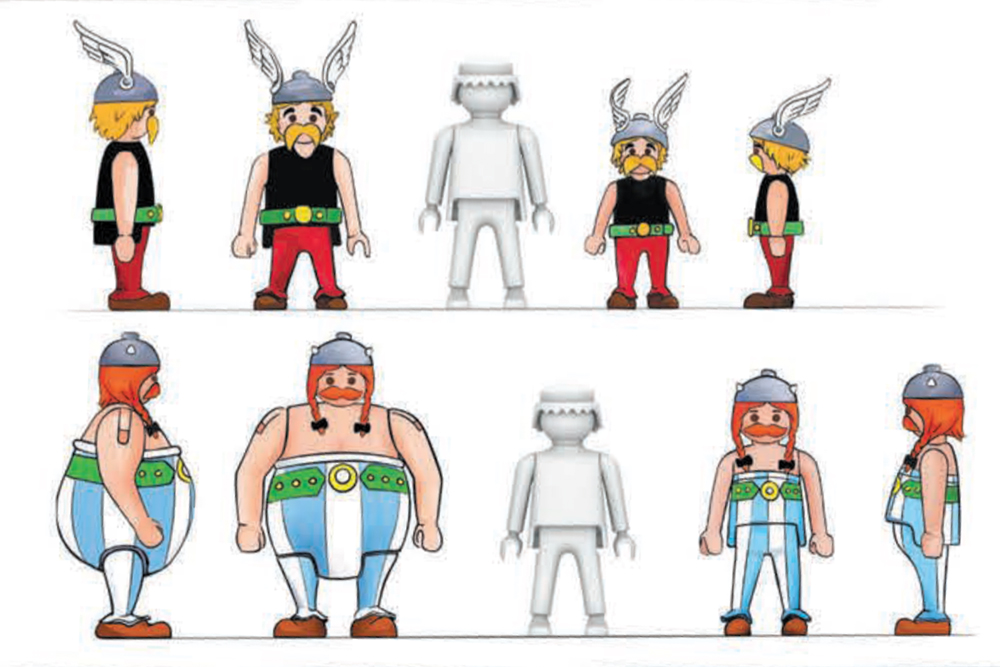
Discover the Asterix Playmobil range:
The village banquet (ref 70931)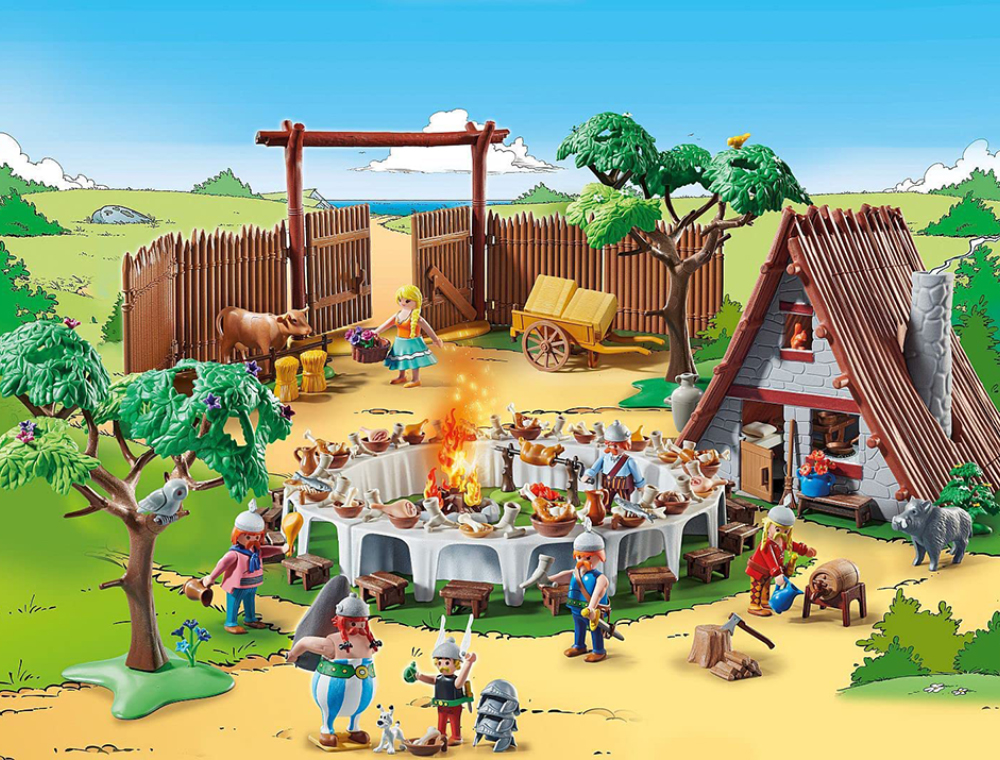
After each trip, Asterix and Obelix return to their peaceful village and recover from their fights with the Romans during a banquet. The big festive table is already set and a delicious boar is on the spit. The fire and the spit can be set up in the center of the banquet and the fence surrounding the village can be closed to celebrate the end of the adventure in peace. All the tasty adventures of our Gaulish friends end in front of a majestic banquet, beautifully reconstructed by Playmobil. At its table, 18 Gauls can sit down to celebrate a victory over the Romans. The traditional boar is grilled on a spit. With the famous Gauls Asterix, Obelix and his menhir, the dog Dogmatix, the villagers, a revolving spit with boar and chimney and many other accessories
Hut of Majestix (ref 70932)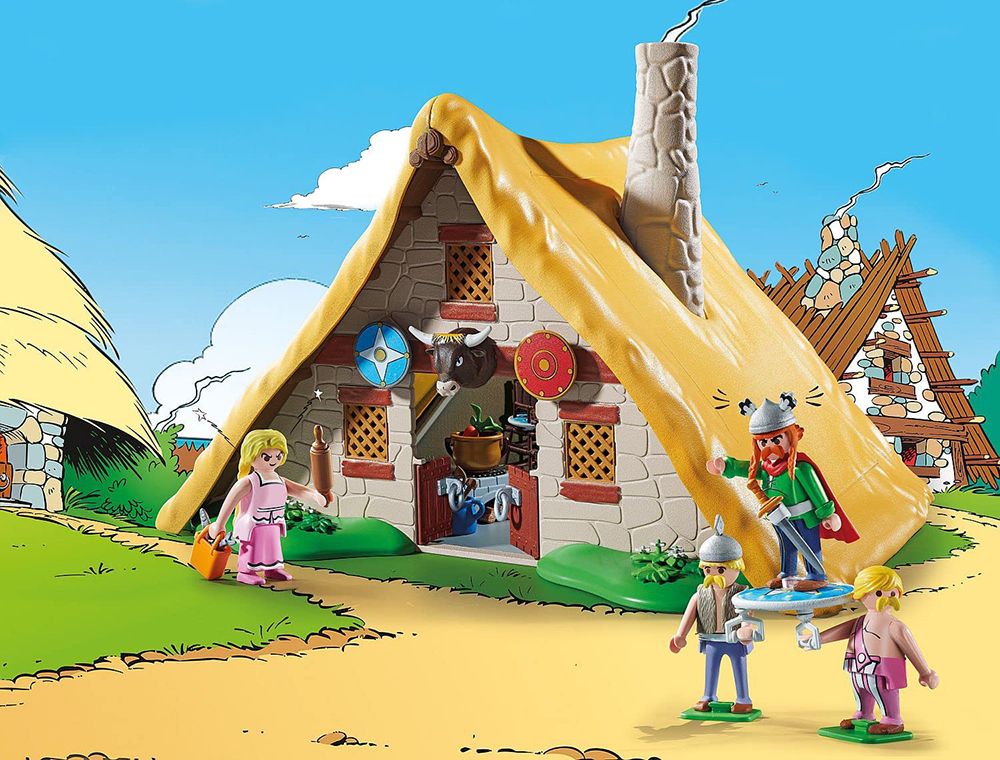
Let's find Majestix the famous chief of the village of our intrepid Gauls, near his hut with his dear wife Bonemine (and her club!) / With all the essential accessories: the chief's seat with a ladder, a kitchen corner and Bonemine's knitting corner. Bonemine's face is interchangeable according to her mood. Just turn her head and she'll be angry with her husband Abraracourcix.
The hut of Assurancetourix (ref 71016)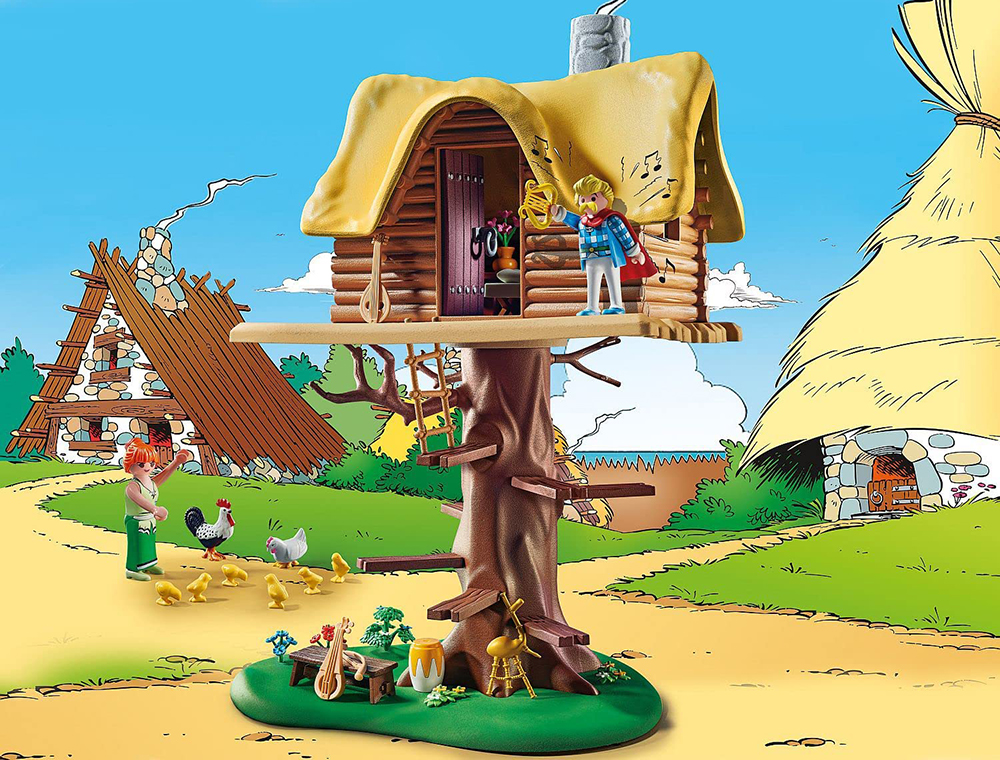
An Asterix collection without the village bard Assurancetourix was unthinkable§ The hut contains all his furniture, a bagpipe, a fiddle, a harp and many other accessories. With the rope included, the bard, Assuredtourix, can be tied to a branch.
Miraculix with Magic Potion (ref 70933)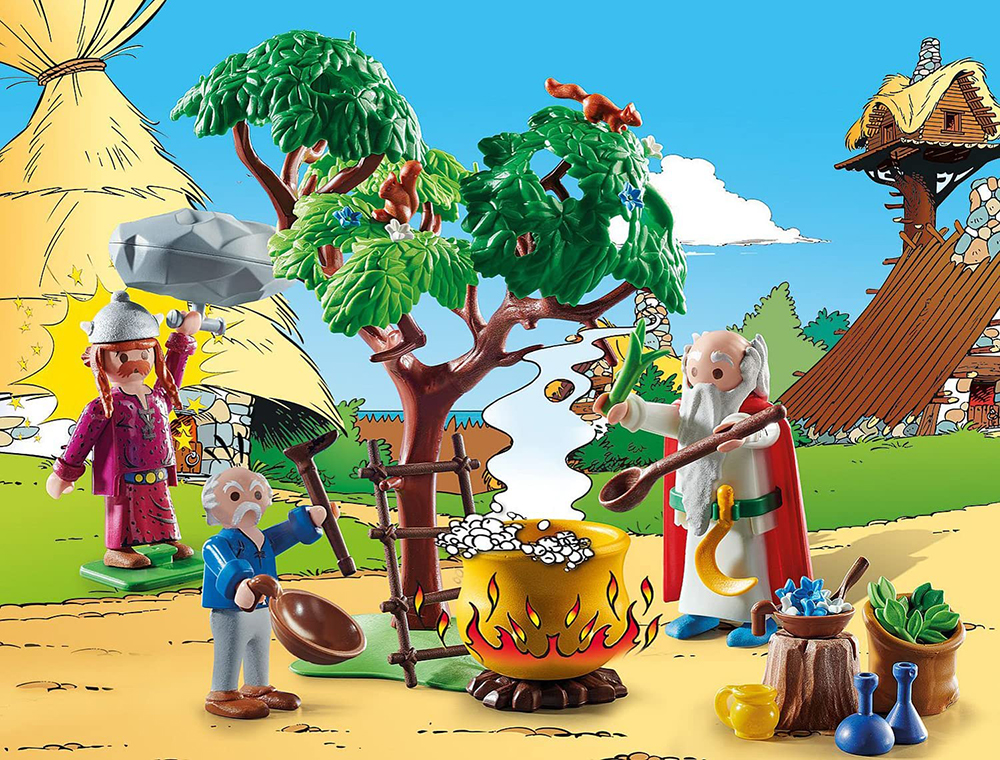
Miraculix, the venerable druid of the village, picks the mistletoe and prepares magic potions, in particular the famous potion which gives superhuman strength to the one who drinks it. He is assisted by the village elder Agecanonix. Beware, close to them prowls the Roman spy Caligula Minus. Comes with three characters and many accessories. Note that the Roman spy Caligula Minus has a changing face and wig to fool the Gauls.
The Roman legionaries (ref 70934)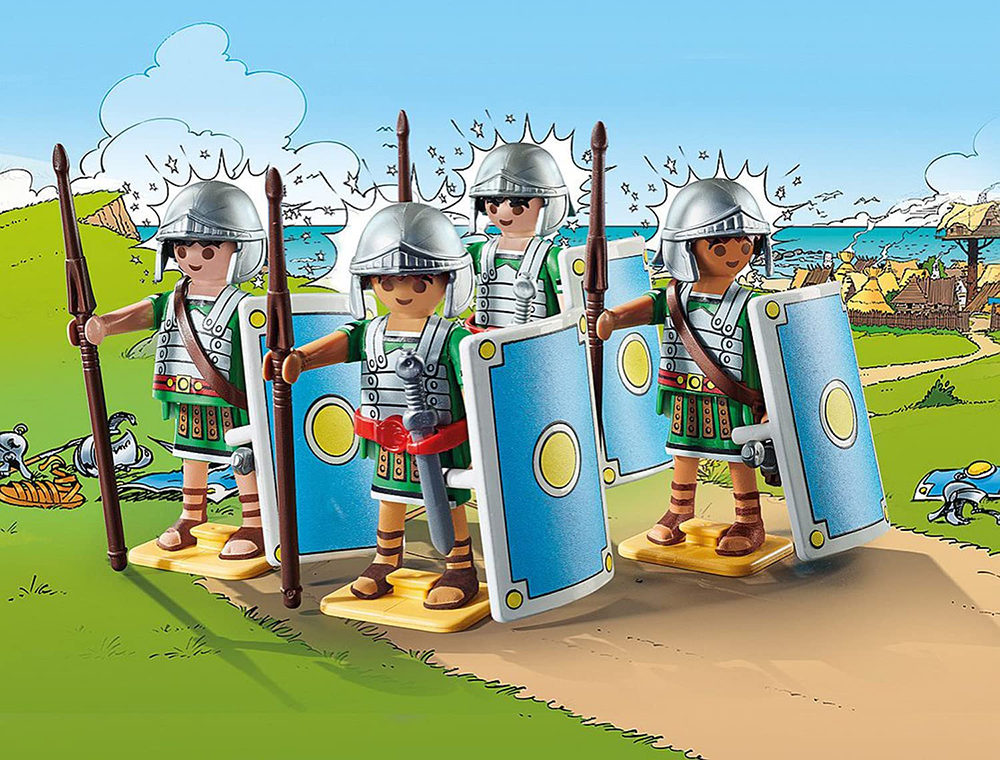
To defeat the Gauls, the Romans attack with their famous turtle formation which allows them to advance, protected by shields positioned in front of and above them. With four Romans, helmets, swords, spears and shields. A support plate is included for each figure for added stability. All figures can have their faces alternated: before and after the battle.
Boar Hunt (ref 71160)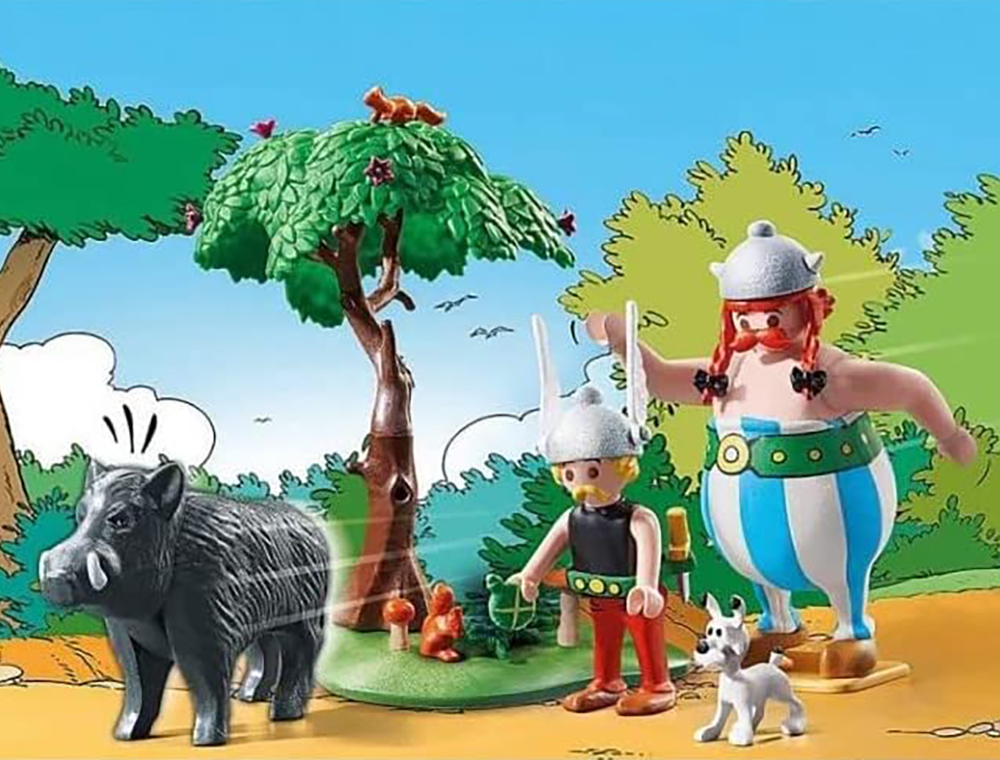
With Asterix, Obelix and Dogmatix, a boar and a tree that Obelix can uproot and many accessories.
The legionnaires' tent (ref 71015)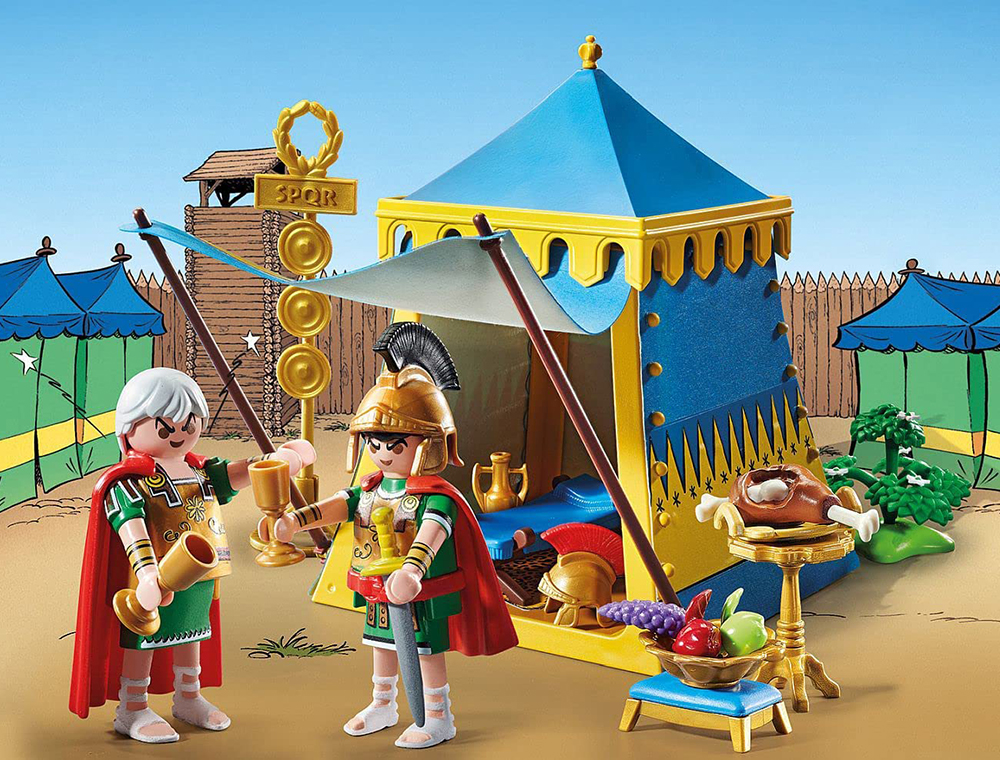
This box contains the generals Calus Bonus and Marcus Sacapus in armor with cape and helmet and their richly furnished command tent. Everything is provided so that they can have a good meal while working out the plan for their next battle against the Gauls. With the two generals, their tent with carpet, bed, stool, chair and many accessories.
The Adventures of Asterix is a comic book series about a village of indomitable Gallic warriors who venture around the world and fight the Roman Republic, with the help of a magic potion, in the time of Julius Caesar, in an ahistorical tale of the post-Gallic War period. The series was first published in the French-Belgian comic book magazine Pilote on October 29, 1959. It was written by René Goscinny and illustrated by Albert Uderzo until Goscinny's death in 1977. Uderzo then resumed writing until 2009, when he sold the rights to the publishing company Hachette; he died in 2020. In 2013, a new team composed of Jean-Yves Ferri (scenario) and Didier Conrad (illustrations) takes over. In 2021, 39 volumes have been released, the most recent being released in October 2021.
(Source: press release)

